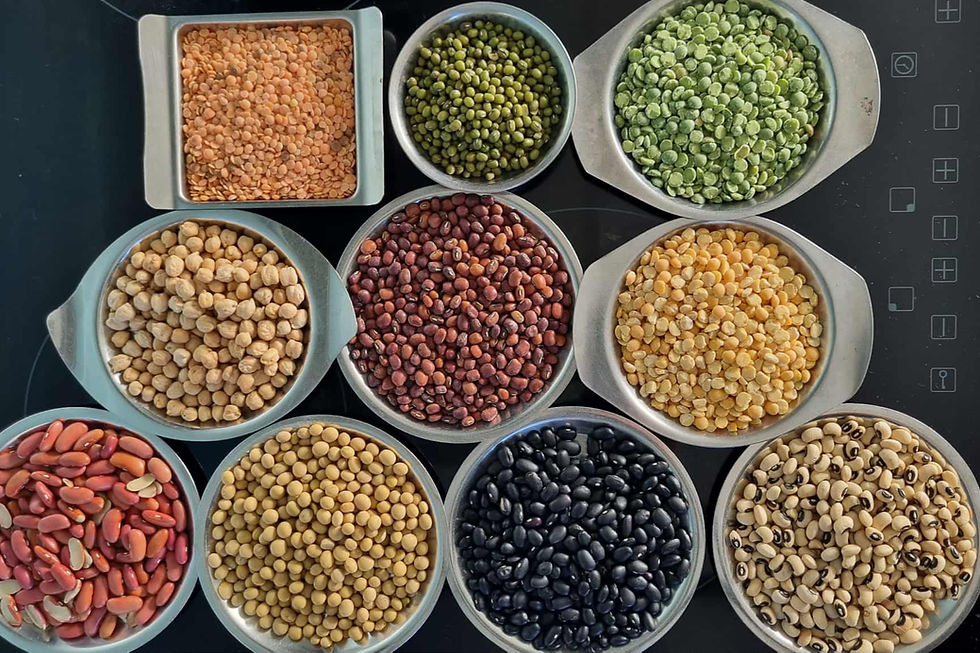What about Protein?
- Selena Bean

- Sep 16
- 2 min read

Where shall we get our protein?
Eat plenty of meat and dairy to grow big and strong, or so we have been told. Without meat you will not get enough protein, and you'll die of malnutrition!
Nowadays, another faction is claiming that you can get it all from the plants and there is no need to be growing more animals to slaughter, but rather we should devour our defenseless little plants that don't have a voice either. Or do they? But that's another matter altogether.

What does it do?
Protein's main functions are to build, repair, and maintain tissues like muscles, skin, and organs, and to create enzymes and hormones that carry out crucial bodily processes.
Without enough intake of complete proteins, many functions will start to break down and the body will start to consume its own protein i.e.: muscles, to run the show. Pretty soon, we start looking not so pretty.
What is a complete protein?
The building blocks of protein are known as Amino Acids. There are 20 of them and our bodies are capable of producing 11 themselves. We rely on food to obtain the other 9. These 9 are known as Essential Amino Acids as it is essential that we eat some of them every day. A protein that contains all 9 essential amino acids is known as a Complete Protein.

Where do we get complete protein?
The obvious and easiest (and most tasty) choice is to eat meat, dairy food and fish.
They are all complete proteins in their own right and don't need anything else to complete their protein profile. However, the evidence seems to be clear that the days of eating steak, cheese and eggs are coming to a close. The recommendation is to pursue a plant-based diet so good sources of plant protein have to take up the slack.
Generally speaking, eating a range of cereals, legumes and green leafy vegetables will give you all the nutrition you need to eat a balanced diet. Understanding the protein profiles of various legumes and cereals will help you decide which combinations will give you the biggest protein hit. My page on legumes touches lightly on the protein content of various beans but it is not a definitive guide, I'm not a scientist and you should carry out your own research.



Rule of thumb, mix a legume with a grain and some greens. Protein sorted.


Comments